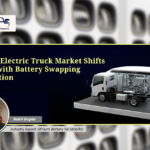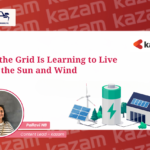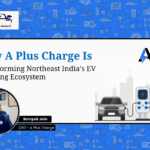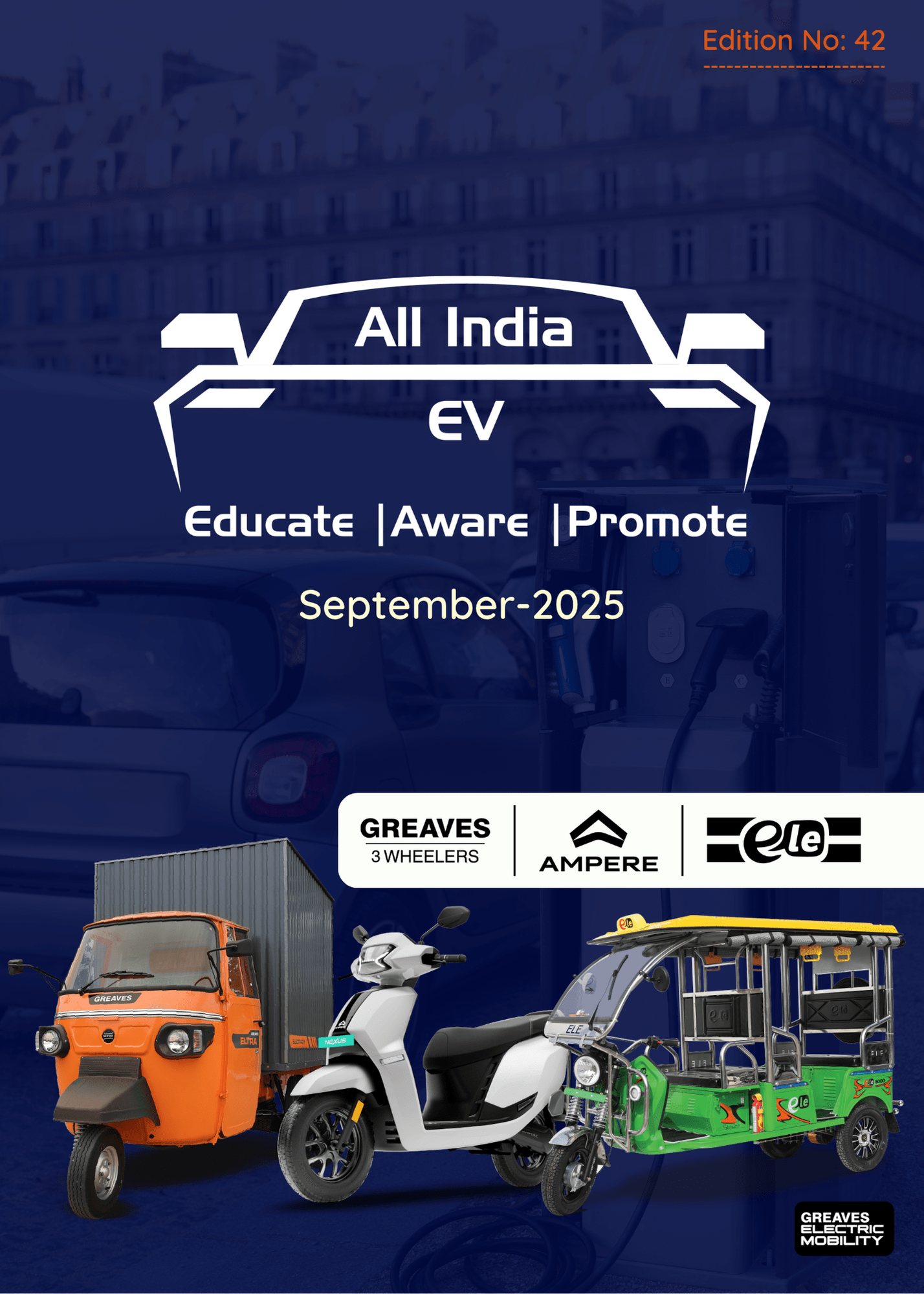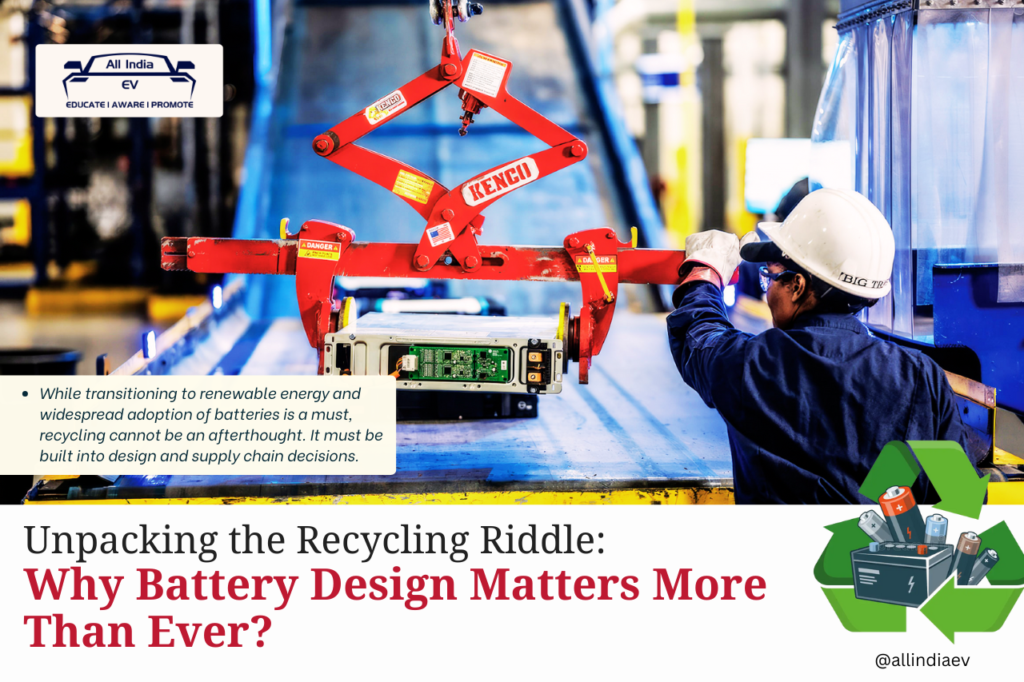
Renewable Energy & Battery Adoption Must Include Recycling in Design and Supply Chain for a Truly Sustainable Transition
As India accelerates its shift toward electric mobility, renewable energy, and battery-powered technologies, lithium-ion batteries are becoming the backbone of this clean energy transition. However, while battery use is surging, the challenge of battery recycling remains under-addressed — and battery design is at the heart of the issue, say industry experts.
According to recyclers, the way batteries are currently designed — with a focus solely on energy density, performance, and cost — is making it difficult, unsafe, and uneconomical to recycle them at scale.
Battery Design: The Hidden Challenge
India’s EV segment, dominated by two-wheelers and three-wheelers, relies largely on imported or locally assembled batteries based on foreign designs. These battery packs are often enclosed in tightly welded aluminium, steel, or plastic casings, secured with sealants and epoxies, making them difficult to dismantle safely.
A typical EV scooter battery may contain 60 to 80 tightly packed, spot-welded cells, requiring skilled technicians and specialized tools for disassembly. A single pack can take up to an hour to dismantle, raising both labour costs and safety concerns.
By 2030, India is expected to retire nearly 800,000 EV battery packs annually, many of which will be handled by informal scrap dealers with minimal safety training. This not only jeopardises worker safety, but also compromises material recovery, ultimately impacting the economics of the recycling process.
India’s Growing Battery Waste Problem
India currently generates around 70,000 tonnes of lithium-ion battery waste annually. Yet, most recycling companies find themselves stuck at step one — handling complex and varied battery designs that resist disassembly.
The lack of standardisation is a major hurdle. Battery chemistries vary (LFP, NMC, LCO), as do form factors (pouch, cylindrical, prismatic), safety mechanisms, and pack architectures. As a result, each batch of batteries requires a different recycling protocol, reducing operational efficiency and increasing processing costs.
Even within a single chemistry or form factor, differences between manufacturers — such as those in phones versus power banks — can affect metal content, yield, and recovery economics. This variability makes batch processing and throughput highly unpredictable, further deterring scalable recycling operations.
A Call for Design-for-Recycling (DfR)
Experts argue that this problem can be addressed only if battery design itself evolves. The solution lies in Design-for-Recycling (DfR) — a philosophy that promotes modular, disassemblable battery structures using non-toxic and easily recoverable materials.
The Indian government has taken initial steps with the Battery Waste Management Rules, 2022, which introduce Extended Producer Responsibility (EPR). However, policy alone isn’t enough. Industry-wide alignment is needed to standardize battery designs — just as India once did with LPG cylinders and LED bulbs.
For example, if all electric two-wheelers adopted a common battery form factor or casing design, it would significantly lower recycling costs, reduce safety hazards, and boost material recovery rates.
Designing for Circularity Is a Strategic Imperative
Recyclers stress that design is not just an engineering issue — it’s a national strategic necessity. India currently imports nearly all of its battery raw materials. As demand grows — with battery storage needs projected to hit 120 GWh by 2030 — tapping into urban mining through recycling becomes essential.
“To meet this demand sustainably, the feedstock we receive must be designed for recovery,” says an industry expert. “Recycling cannot be an afterthought. It must be embedded in product design, supply chains, and policy frameworks from day one.”
Conclusion:
As India charts its path to clean energy leadership, tackling the battery design challenge in recycling is crucial. With the right policy push, design innovation, and industry collaboration, India can unlock a circular battery economy, reduce import dependence, and build a sustainable EV ecosystem from cradle to cradle.





